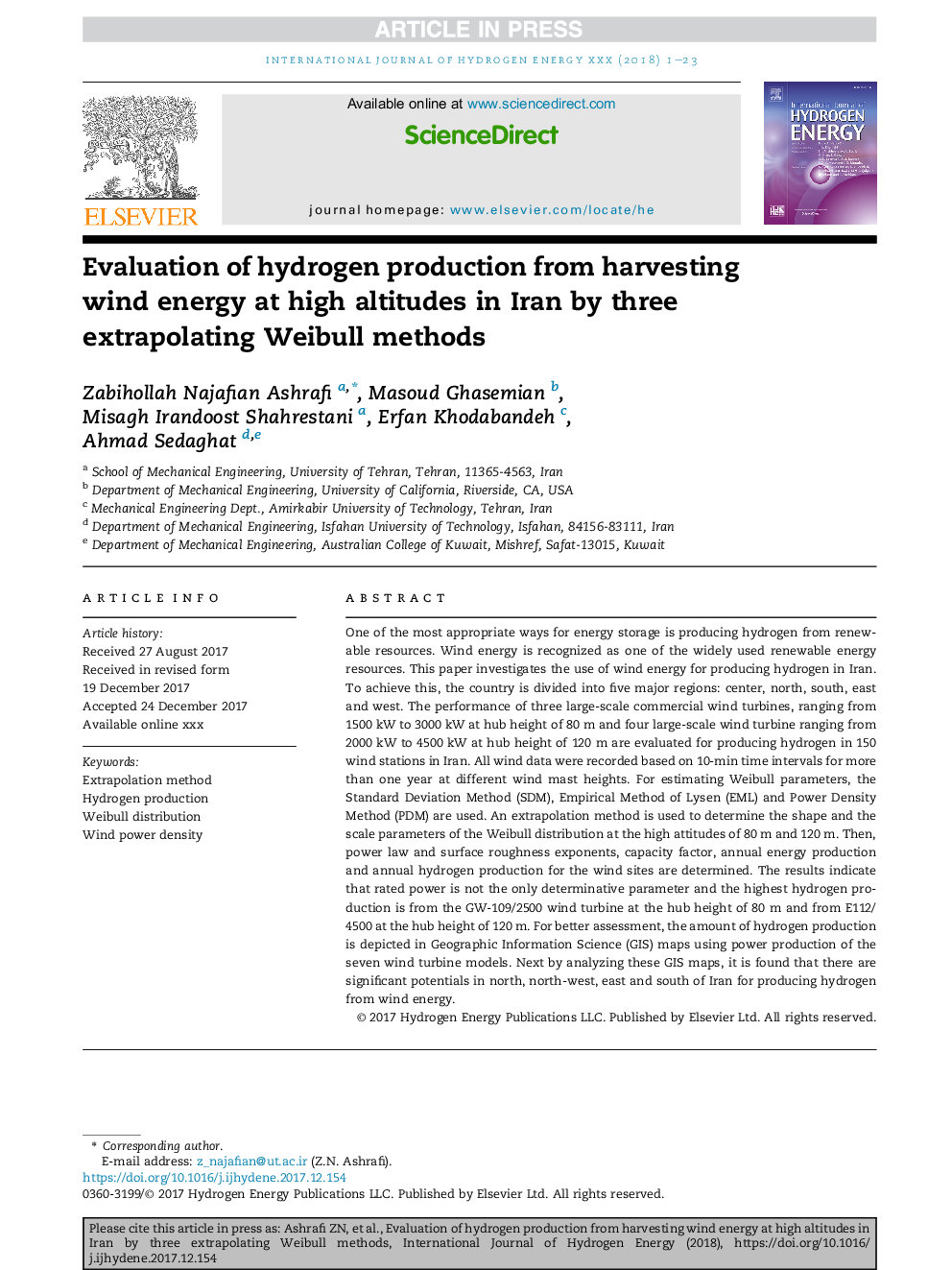| Article ID | Journal | Published Year | Pages | File Type |
|---|---|---|---|---|
| 7707708 | International Journal of Hydrogen Energy | 2018 | 23 Pages |
Abstract
One of the most appropriate ways for energy storage is producing hydrogen from renewable resources. Wind energy is recognized as one of the widely used renewable energy resources. This paper investigates the use of wind energy for producing hydrogen in Iran. To achieve this, the country is divided into five major regions: center, north, south, east and west. The performance of three large-scale commercial wind turbines, ranging from 1500Â kW to 3000Â kW at hub height of 80Â m and four large-scale wind turbine ranging from 2000Â kW to 4500Â kW at hub height of 120Â m are evaluated for producing hydrogen in 150 wind stations in Iran. All wind data were recorded based on 10-min time intervals for more than one year at different wind mast heights. For estimating Weibull parameters, the Standard Deviation Method (SDM), Empirical Method of Lysen (EML) and Power Density Method (PDM) are used. An extrapolation method is used to determine the shape and the scale parameters of the Weibull distribution at the high attitudes of 80Â m and 120Â m. Then, power law and surface roughness exponents, capacity factor, annual energy production and annual hydrogen production for the wind sites are determined. The results indicate that rated power is not the only determinative parameter and the highest hydrogen production is from the GW-109/2500 wind turbine at the hub height of 80Â m and from E112/4500Â at the hub height of 120Â m. For better assessment, the amount of hydrogen production is depicted in Geographic Information Science (GIS) maps using power production of the seven wind turbine models. Next by analyzing these GIS maps, it is found that there are significant potentials in north, north-west, east and south of Iran for producing hydrogen from wind energy.
Related Topics
Physical Sciences and Engineering
Chemistry
Electrochemistry
Authors
Zabihollah Najafian Ashrafi, Masoud Ghasemian, Misagh Irandoost Shahrestani, Erfan Khodabandeh, Ahmad Sedaghat,
